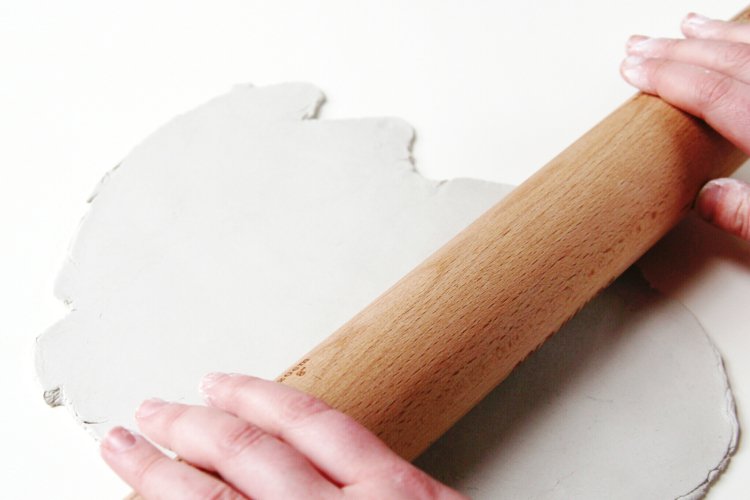How Long Does Air Dry Clay Take To Dry?
/Air dry clay is a versatile and cost-effective craft material. Ideal for making small pots, decorations and jewellery at home.
It’s easy to work with and as it hardens in the air there’s no need for a kiln or oven. Making it perfect for beginners, kids and experienced crafters alike.
Even though is easy to use you may be wondering how long does air dry clay take to dry? Read on to find out exactly how long it takes and the top factors that can affect the drying time.
This page contains affiliate links. This means that if you make a purchase after clicking a link I earn a small commission but it doesn’t cost you a penny extra!
Air Dry Clay.
If you haven’t used air dry clay before you’re in for a treat. It’s super easy to work with and is the perfect introduction to working with clay at home. I’ve used it to make small bowls, pots, napkin rings and so many more beautiful crafts.
As the name suggests air dry clay dries in the air unlike polymer clay and traditional clays that need to be baked in an oven or kiln. It can be hardened simply by leaving it out in the air which makes it a popular choice for beginner crafters and families with kids.
When the clay is fully dry it becomes hard and durable. You can add fine detail with stamps, sand it, paint it using acrylic paint and even glaze it. I’ve written a whole post about how to glaze air dry clay you might want to check out.
Once your clay project is finished you simply leave the clay to sit out in the air to dry and become hard. The only downside to using air drying clay is that it can take quite a while fully harden.
In fact, one of the questions I get asked the most is how long does it take for air dry clay to dry? There are a number of factors I’ve found along the way that can affect how long it takes air-drying clay to harden and I can’t wait to share them with you so you too can make fantastic clay projects at home.
Favourite Types of Air Dry Clay.
Before we start let’s talk air dry clay. There are a couple of different types of air-dry clay I've used and recommend.
First up is the Das Air Dry Clay. A long-time favourite (I used it to make these stamped clay bowls) and available in most craft shops here in the U.K. It comes in white and terracotta and I recently spotted a stone effect that I’m excited to try.
The next one is the white Crayola Air Dry Clay. It comes in a large 5 lbs resealable tub. Great for large projects or big groups. Both the Crayola and the Das clay look grey when wet but dry to a matte off-white colour.
Another clay that comes highly recommended (although I haven't used it myself) is Creative Paperclay. If you can't find either of the first 2 types of clay this one might be worth experimenting with.
Want to know how to finish and protect your clay projects? Make sure to read my post on how to glaze air dry clay.
How long does air dry clay take to dry?
Air dry clay is a paper-based clay that can take anywhere from 24 - 72 hours to harden depending on the thickness of the clay and environmental conditions.
I’ve listed a few of the most common factors that can affect the drying time below:
1. The thickness of the clay.
This first one is pretty self-explanatory but worth saying all the same. The thicker the clay the longer it will take to dry. The thinner the clay the quicker it will take to dry.
The best way to dry a thick clay project is to turn it over throughout the drying process. A thin clay (around 3mm) like I used in my stamped clay bowls was turned over halfway through and took around 48 hours to dry.
2. The temperature/humidity of the room.
The speed your clay takes to dry can depend on the room temperature. The warmer/drier the environment the faster your clay will dry. In the hot summer months, I’ve had clay projects dry in around 24 hours when in direct sunlight.
During the cold, wet winter months with high humidity, it can take several days and even up to a week.
3. Airflow/Ventilation.
Another thing to take into account is how well-ventilated the area is. I’ve found placing the clay near an open window on a warm, dry day noticeably speeds up the drying process.
In the places where your clay is in contact with a surface (like when using a glass bowl as a mould), the clay will dry slower as the moisture is trapped and cannot escape.
To make sure your clay can fully harden you’ll need to expose all the sides to the air. I recommend drying your smaller projects on a cooling rack to maximise the airflow. This speeds up the process and ensures all sides are exposed to the air.
If you’re using a mould, allow your clay to dry long enough to hold its shape (usually around 24 hours) before removing it from the mould and letting it fully dry.
For larger pieces, it may not be possible to dry your piece on a cooling rack. In this case, you’ll need to rotate your piece regularly to stop warping and cracking.
How to keep air dry clay from cracking.
As air dry clay dries it can crack. This is perfectly normal. As the clay dries it loses water causing the clay to shrink.
If notice a lot of cracks forming it may be that the environment/climate is causing the clay to dry too fast. To slow down the drying process you can loosely cover your air-dry clay project with a damp towel.
There are a couple of ways you can fix any cracks. As it dries you can smooth over any light cracks using slip (a clay and water mixture) and your fingers.
For any large cracks, you need to wait until your clay is dry before packing the crack with more air dry clay and leaving it to dry again.
Don’t forget you can always use fine sandpaper to remove any rough and uneven edges.
Can you speed up the drying process?
I always recommend letting your self-hardening clay dry as naturally as possible. High temperatures can make your clay crack or warp and lead to uneven drying.
I know some people say you can bake it in the oven or microwave but in my experience, this is always a bad idea. In fact, both the Crayola Air Dry Clay and Das Air Dry Clay specifically state not to put it in a kiln or oven.
Another popular method is using a hairdryer or blow dryer but I’ve found this causes more problems as it dries the clay unevenly and can cause cracks and curling edges. There’s nothing worse than spending hours on a project only for it to crack and break in the final stages.
How do you know when air dry clay is dry?
There are a couple of simple ways to tell if your clay is fully dry. The first is the colour test. As air dry clay dries the colour becomes lighter and uniform in colour.
In the case of the white air dry clay, it turns from a light grey colour to a slightly off-white colour. The terracotta clay becomes a lighter terracotta colour. If there are any dark patches your clay is still wet.
Another way to check it’s dry is to gently tap your fingers or fingernails against it. When it’s dry it should sound like it’s hollow as you tap.
How to store your air dry clay?
To stop your leftover air dry clay from drying out it can be wrapped in cling film or plastic wrap and stored in an airtight container. Store it in a cool, dark place so you can come back to it later.
For more information make sure to check out my How To Store Air Dry Clay post.
As with any craft, there’s an element of trial and error but hopefully, some of these clay drying tips will help get you off to a good start and get the best results out of your clay.
If you want some more tips for working with air dry clay make sure to check out my Air Dry Clay Tips And Tricks post. I also have a post that takes all about sealing or varnishing your clay projects using an acrylic sealer or mod podge.
Ready to make some air-dry clay projects? You can find some of my favourite clay craft projects below:
You can find all my Air Dry Clay projects here for inspiration and ideas!










